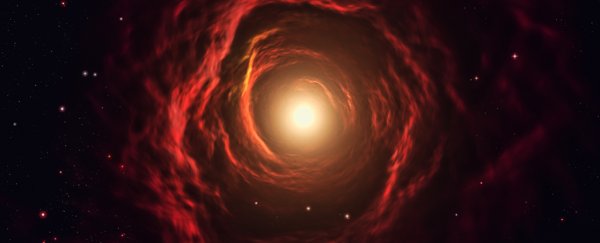For tens of millions of years, our newborn Universe was shrouded in hydrogen. Bit by bit, this vast mist was torn apart by the light of the very first stars in a dawn that defined the shape of the emerging cosmos.
Having a timeline for this colossal shift would go a long way in helping us understand the Universe's evolution, yet so far our best attempts have been fuzzy estimates based on low-quality data.
An international team of astronomers led by the Max Planck Institute for Astronomy in Germany used the light from dozens of distant objects called quasars to strip away uncertainties, determining the last major wisps of hydrogen 'fog' burned away far later than we first thought, more than a billion years after the Big Bang.
The first 380,000 years were a static hiss of subatomic particles congealing out of the cooling vacuum of expanding space-time.
Once the temperature dropped, hydrogen atoms formed – simple structures consisting of solitary protons teaming up with single electrons.
Soon the entire Universe was filled with uncharged atoms, a sea of them bobbing back and forth in the infinite darkness.
Where crowds of the neutral hydrogen atoms collected under the unpredictable nudge of quantum laws, gravity took over, pulling more and more gas into balls where nuclear fusion could erupt.
This first sun-rise – the breaking of cosmic dawn – bathed the surrounding hydrogen fog in radiation, driving their electrons from their protons and turning the atoms back into the ions they once were.
Just how long this dawn took, from the first light of those early stars to the reionization of the last remaining pockets of primordial hydrogen, has never been clear.
Studies conducted more than 50 years ago made use of the way light from violently active galactic cores (called quasars) was absorbed by interceding gas floating about in the nearby intergalactic medium. Find a series of quasars stretching into the distance, you can effectively see a timeline of neutral hydrogen gas being ionized.
Knowing the theory is one thing. In practical terms, it's hard to interpret a precise timeline from a handful of quasars. Not only is their light distorted by the expansion of the Universe, but it also passes through pockets of neutral hydrogen formed well after the cosmic dawn.
To get a better sense of this stutter of ionized hydrogen across the sky, researchers supersized their sample, tripling the previous number of high-quality spectral data by analyzing the light from a total of 67 quasars.
The goal was to better understand the impact of these fresher pockets of hydrogen atoms, allowing the researchers to better identify more distant bursts of ionization.
According to their own figures, the last dregs of original hydrogen fell to the rays of first-generation starlight around 1.1 billion years after the Big Bang.
"Until a few years ago, the prevailing wisdom was that reionization completed almost 200 million years earlier," says astronomer Frederick Davies from the Max Planck Institute for Astronomy in Germany.
"Here we now have the strongest evidence yet that the process ended much later, during a cosmic epoch more readily observable by current generation observational facilities."
Future technology capable of directly detecting the spectral lines emitted by the reionization of hydrogen should be able to further clarify not just when this epoch ended, but provide critical details on how it unfolded.
"This new dataset provides a crucial benchmark against which numerical simulations of the Universe's first billion years will be tested for years to come," says Davies.
This research was published in the Monthly Notices of the Royal Astronomical Society.
